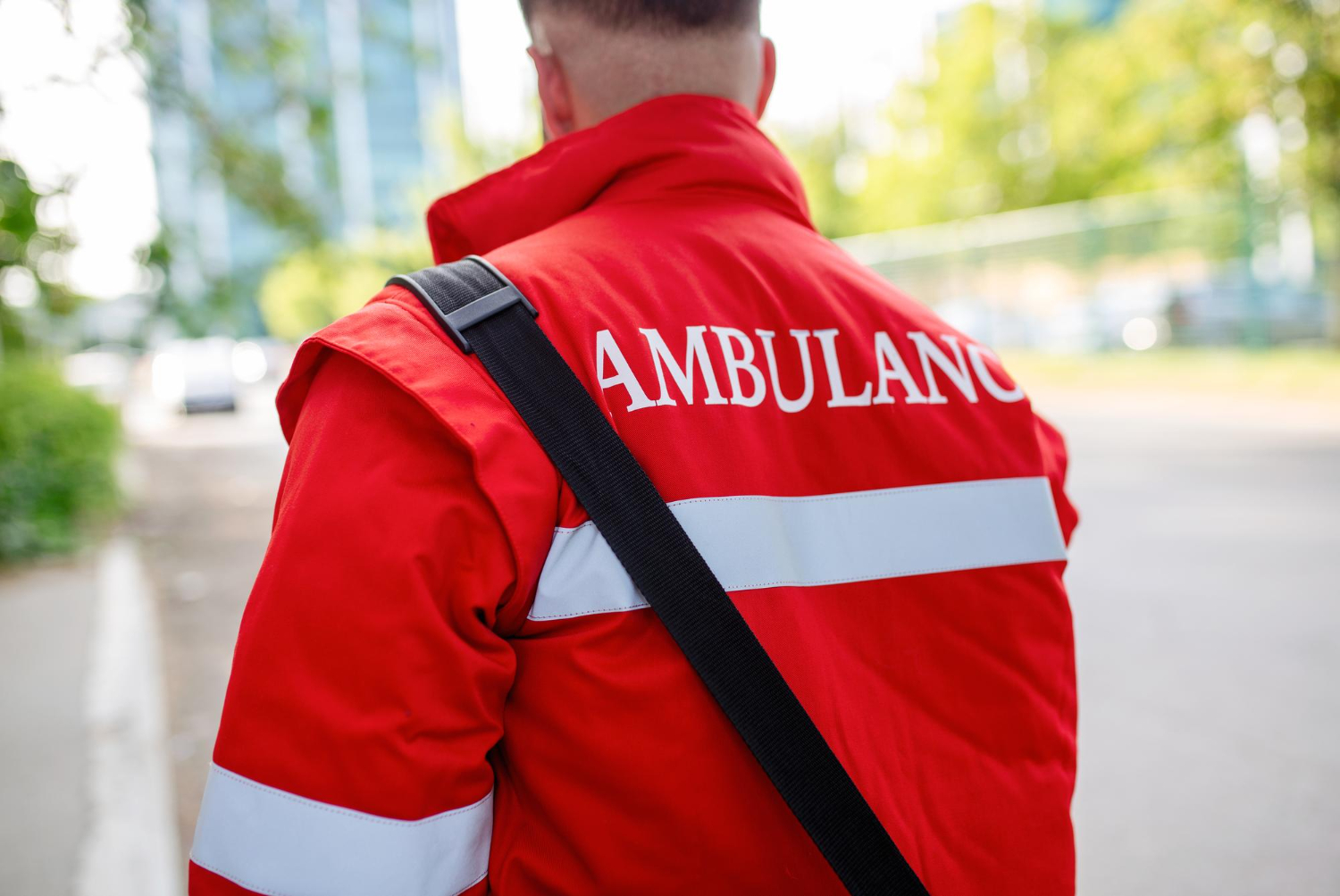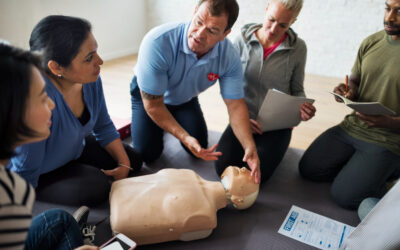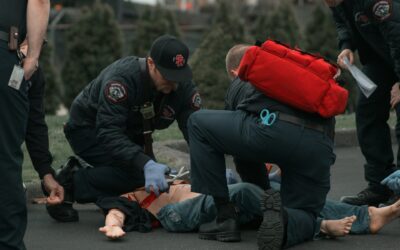In the United States, we’re used to our standards of providing emergency medical services. So, it’s eye-opening when an American first responder goes abroad and does a ride-along with an EMS provider.
As a US Fire Chief, I was fortunate to do a ride-along with the largest ambulance company in England. I was paired with two of their amazing paramedics. Over the shift, certain aspects of US vs. UK EMS protocols stood out more than others.
The Differences in US Emergency Response
As you’re likely aware, in England, they have a National Health Service (NHS) that provides medical care services throughout the country, regardless of one’s socioeconomic place in life. In doing this, the NHS has its own ambulance services, divided into different regions (referred to as “Trusts”). It’s similar to how the US might have a county ambulance region.
When the NHS doesn’t have the resources to offer ambulance services to a certain Trust, they put it out to bid with private ambulance companies—it’s much like a Request for Proposal (RFP) in the United States.
NHS handles dispatching and then sends ambulances out based on the priority of the call. In the UK system, they categorize medical emergencies into four groups—each with a time standard for response:
- Category 1: The highest priority with a response requirement of 8 minutes or less—typically for cardiac arrest, life-threatening illnesses, and other critical emergencies.
- Category 2: An average response time of 18 minutes or less.
- Category 3: A target response time of 120 minutes or less.
- Category 4: A target response time of 180 minutes or less.
Like many places in the world, England has challenges with resources. There are times when there are no available ambulances when someone calls with an emergency, so a cue of emergencies starts in the dispatch center. As with anywhere else, these shortages and issues can impact the patient outcome.
Responding to Our First Call
The issue with resource shortages became apparent with our first call when we went into service. We responded to a disabled person who had fallen in his bathroom and called for help around 7:30 a.m.
When we were sent out from the local ambulance station, it was 10:00 a.m., and we responded with lights and sirens with a 20-minute response time before we arrived at the patient’s home. This call was an excellent example of the challenges the EMS faces in the UK right out of the gate—especially with ambulance response times.
That said, EMS dispatchers were very efficient in their call screenings. They recognized that the person wasn’t in a life-threatening crisis but rather needed some help getting back into their wheelchair. Still, the response times were clearly a challenge for the first responders in the UK.
To help deal with the overwhelmed health system nationally, the NHS has specific policies on treating patients and the requirements to authorize those treatments. During our response to the patient who had fallen and needed help, I noticed he had a black eye from a fall a few days earlier. He reported that he had since been feeling nauseous and experiencing increased dizziness. Ultimately, we didn’t transport the patient. The paramedics did a thorough exam, helped him back into his wheelchair, and left him with a caretaker.
After the call, the paramedics and I discussed the patient’s condition and further details about the case. They asked me if I would have handled the situation differently in the United States. I told them we would have taken him to the hospital to rule out subdural hematoma and intracranial hemorrhage due to the previous fall with nausea and dizziness.
My fellow paramedics told me that NHS wouldn’t, in this case, have authorized medical providers to give a CT because of his age (he was a younger man) and because he didn’t meet the requirements of having vomited at least three times or reporting other life-threatening concerns like altered level of consciousness. In this individual case, it seemed like a risk, but on a national scale, I could see how the NHS triages patient care to balance resource availability.
NHS hospitals are universal. You don’t need to visit specific hospitals or urgent care facilities for certain insurance carriers, which gives some easier access to emergency departments and healthcare professionals. One way the NHS deals with limited resources is by having paramedics spend more time on-scene with a patient in an attempt to resolve their medical issue and avoid transporting them to an overwhelmed hospital unnecessarily. It’s similar to the community-based paramedicine model growing in the United States.
In the high-call-volume areas in California where I worked as a paramedic, we were pressured to get back into service as quickly as possible. Common practice includes arriving on scene, completing an assessment, initiating treatment, and loading the patient for transport with continued treatment en route. At the emergency room, we would then hand the patient off to the emergency room staff. In the US, EMS practices don’t allow for much “scene time.”
By contrast, in England, EMS crews sat down with the patients for a more in-depth assessment. They reviewed their medications and asked them how their treatments were going as well as what their recent conversations with their primary care physician were. It was similar to how the first 15 minutes might go with a doctor or nurse upon arrival at an emergency room, but in this case, it was happening with a qualified paramedic.
At first, this extra time seemed unnecessary since hospital healthcare providers would likely repeat the process later. But the paramedics explained that the goal for their Trust, like many others in the UK, was to limit transports to less than 60% of the responses. The goal was to have the paramedics treat the patients as best they could on the scene in hopes that they wouldn’t require transport and further emergency services.
I found it impressive that not everyone was required to go to the hospital—in contrast to my experience in the United States. In the US, we were under pressure to take everyone to the hospital to limit the legal liability of not transporting a patient and getting sued for abandonment.
The UK style of emergency response was also a nice change as a caregiver. Paramedics could sit with patients and take a more personable interest in their care and well-being. They could offer healthcare guidance and then leave the patient at home with a plan to improve their situation. It was a real patient and care-provider relationship—something fairly exclusive to patients and their doctors in America.
EMS in the UK Has Similar Challenges to the US
One challenge I hoped was unique to the United States was our issue with “wall-time.” Wall-time refers to the time between when an ambulance arrives at the hospital and the time the patient is transferred to hospital staff.
The average wall-time in Sacramento, California, is about four hours. This time would have been unheard of when I first got my paramedic license in the 1990s. But it’s become a systemic problem in the United States.
When I related this to the UK crew, they said, “Yes, here it’s called ‘stacking.'” They told me a story about a patient they’d recently brought to the emergency room, who had waited 36 hours before transferring to hospital staff.
I asked how that could have possibly worked, and they said that ambulance staff came out to the hospital and would rotate turns sitting with the patient in the back of the ambulance. When she needed to use the bathroom, they took her inside and brought her back into the ambulance.
I asked if her condition was mild, and the hospital had triaged her to the bottom of the priority list. They said, “No, she was having a stroke. She actually passed away a few days later.”
In the UK, stacking has become so severe that a new wing was built in their hospital with portable buildings outside the emergency room filled with hospital beds. This allows ambulance crews to sit with their patients. One ambulance company staffed a van with paramedics to take to the hospital to sit with patients in the staging building. This allowed the crews working on transport to hand off their patients and get back into service.
In some ways, even though this story seemed extreme, it did show that some of the challenges we think are unique to us in America—indications that we’re falling short—are not isolated just to the United States. We’re not alone.
EMS and Fire Departments Teaming Up
One somewhat controversial dynamic in America is the involvement of fire departments with EMS. Involvement has become standard throughout the country because there are often more fire stations than ambulance crews. If firefighters have EMT and Paramedic training, they can get to the scene first and initiate treatment when every minute counts.
The relationship with fire departments and paramedics has been life-saving in the US, but it’s not cheap. The costs for making a fire department ALS (staffed with paramedics) are significant, especially considering higher salaries, more training requirements, supplies, equipment, and liability. However, cross-training has saved countless lives by getting paramedics on fire engines and to the scene more quickly. Not to mention that the additional staff can help move patients to an ambulance and treat them on the way to the hospital when needed. It’s far better to treat an anaphylactic patient or cardiac patient right away versus waiting five minutes (or more) for an ambulance. It’s well worth increasing costs to offer a higher level of care.
Many firefighters, however, would rather not be in the emergency medicine business. I can tell you from entering the fire services in the late 90s when paramedicine was just becoming a common practice in fire service that it wasn’t a welcome change. In a particular San Francisco Bay area fire department, there were cases of violence toward the paramedics!
Fortunately, it’s now become the norm. For fire chiefs, the combination helps justify our high budget in relation to other city departments (aside from the police department, which deserves every penny it gets). This relationship, however, isn’t the norm in England.
In England, the “fire brigade” typically only responds to incidents like car accidents and other technical rescue-type calls. Paramedics on fire engines are uncommon in the United Kingdom. So, ambulance crews are often left to themselves to handle EMS calls.
During my ride along, the situation was quite evident. Then, while having lunch at a pub with my family after my shift, a man collapsed in a nearby booth. I helped him to the floor and got him into the Trendelenburg position. I rendered aid until the ambulance crew arrived. They asked me to stay and help move him to the gurney because they needed the additional manpower.
As a fire chief, I value our EMS division very much. It helps justify our existence, considering that it makes up about 80% of our calls. From a public perspective, almost everyone remembers seeing someone having a medical emergency. If you ask the average person when they last saw a house on fire, you often get the answer, “Never.” It doesn’t mean America is necessarily running EMS more efficiently, but I think the fire department’s involvement in EMS is very valuable.
Overall, I was most impressed with the paramedics themselves. Just like our first responders here at home, there are some amazing UK EMS personnel who dedicate their lives to helping others, even in the most stressful situations. They displayed excellent decision making and critical thinking. More importantly, I saw the compassion the crew gave to each of the half-dozen patients we saw that shift. With the pros and cons of the EMS system in England, it was clear that when people called “999” (their 911), they were in very good hands.
For more resources to help your emergency responders operate more effectively, explore LogRx. We offer an efficient tool for helping your team track narcotics and manage drug inventory right from their handheld device. It may be a small tool, but it can free up your team and protect your office from diversion and mishandling of drugs. For administration, it’s invaluable for taking the headache and stress out of controlled substance tracking. Designed by EMS responders, LogRx is like having another team member to help keep you on track! Reach out today to learn more!






